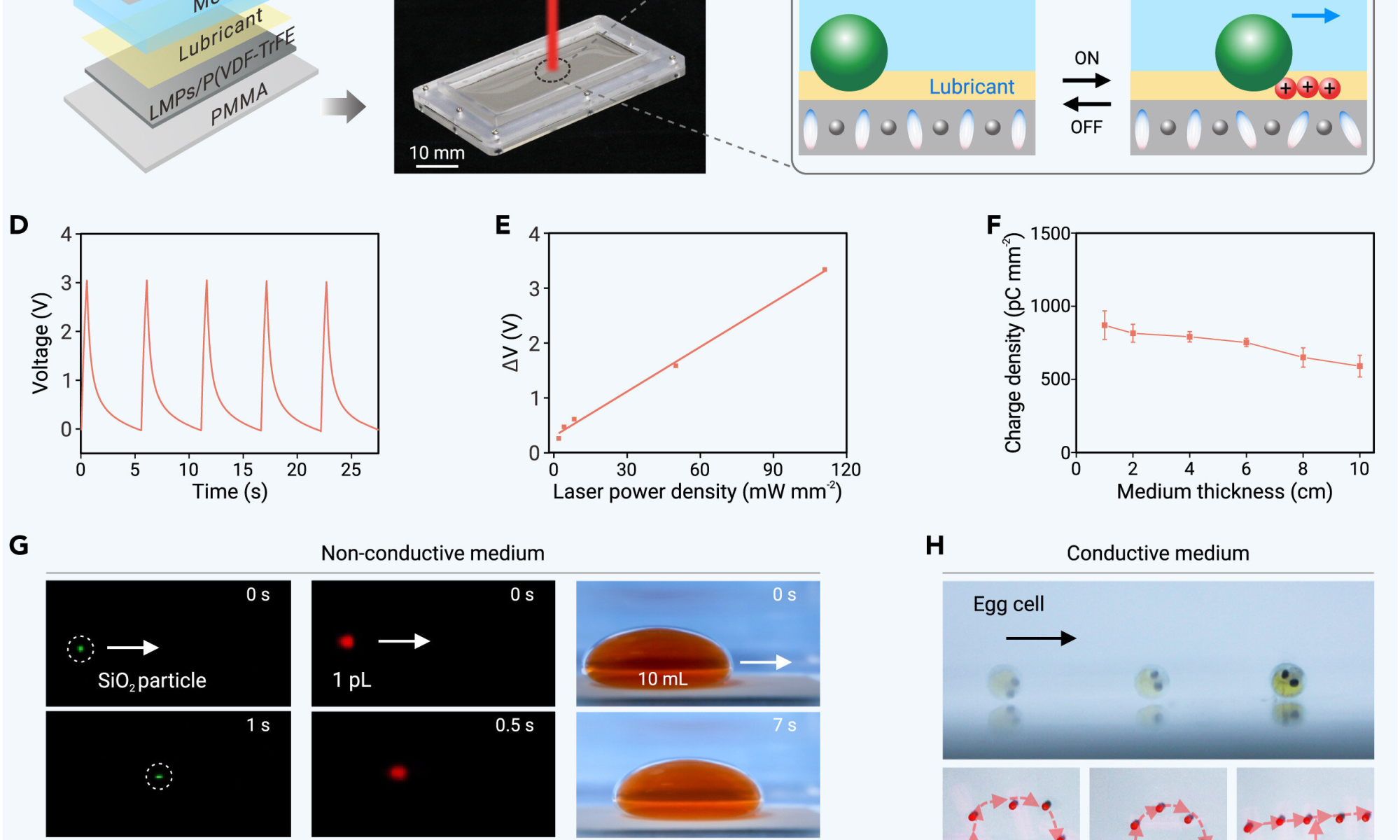
Optical tweezers and related techniques provide extraordinary opportunities for research and applications in the physical, biological, and medical fields. However, certain requirements such as high-intensity laser beams, sophisticated electrode designs, additional electric sources, and low-conductive media, significantly impede their flexibility and adaptability, thus hindering their practical applications.
In a study published in The Innovation, a research team led by Dr. Du Xuemin from the Shenzhen Institutes of Advanced Technology (SIAT) of the Chinese Academy of Sciences reported a novel photopyroelectric tweezer (PPT) that combines the advantages of the light and electric fields. The PPT enables versatile manipulation in various working scenarios.
The proposed PPT consists of two key components, a near infrared (NIR) spectrum laser light source and a PPT device that includes a liquid medium and a photopyroelectric substrate.
The photopyroelectric substrate includes a superhydrophobic ferroelectric polymer layer made of Ga-In liquid metal microparticle-embedded poly (vinylidene fluoride-co-trifluoroethylene) (LMPs/P(VDF-TrFE)) composites, and a lubricant-infused slippery layer. The polymer layer generates real-time surface charges via the photopyroelectric effect, while the lubricant layer reduces motion resistance, suppresses contamination, and prevents charge screening by conductive media.
Owing to its rationally designed structure, the PPT efficiently and durably generates surface charges when exposed to low-intensity NIR (as low as ~ 8.3 mW mm-2) irradiation. This induces a strong driving force (up to ~ 4.6×10-5 N) without requiring high-intensity laser beam, complex electrode designs, and additional electric sources.
“The innovation lies in the rational design of the photopyroelectric substrate, which efficiently generates charges, and the lubricant layer that prevents charge screening by conductive media. “This design imparts unparalleled flexibility and adaptability for diverse object manipulation,” said Dr. Du.
The PPT can remotely and programmably manipulate objects of diverse materials (polymer, inorganic, and metal), phases (bubble, liquid, and solid), and geometries (sphere, cuboid, and wire). Moreover, it is adaptable to various media with wide-range conductivities (0.001 mS cm-1~ 91.0 mS cm-1) and is versatile for both portable macroscopic manipulation platforms and microscopic manipulation systems. It supports on-demand manipulating areas ranging from 5 μm to 2.5 mm, enabling cross-scale manipulations of solid objects, liquid droplets, and biological samples from single cell to cell assemblies.
The PPT proposed in this study offers a new tool for robotics, colloidal science, organoids, tissue engineering, and neuromodulation.
More information: Fang Wang et al, Photopyroelectric tweezers for versatile manipulation, The Innovation (2024). DOI: 10.1016/j.xinn.2024.100742
Provided by Chinese Academy of Sciences

